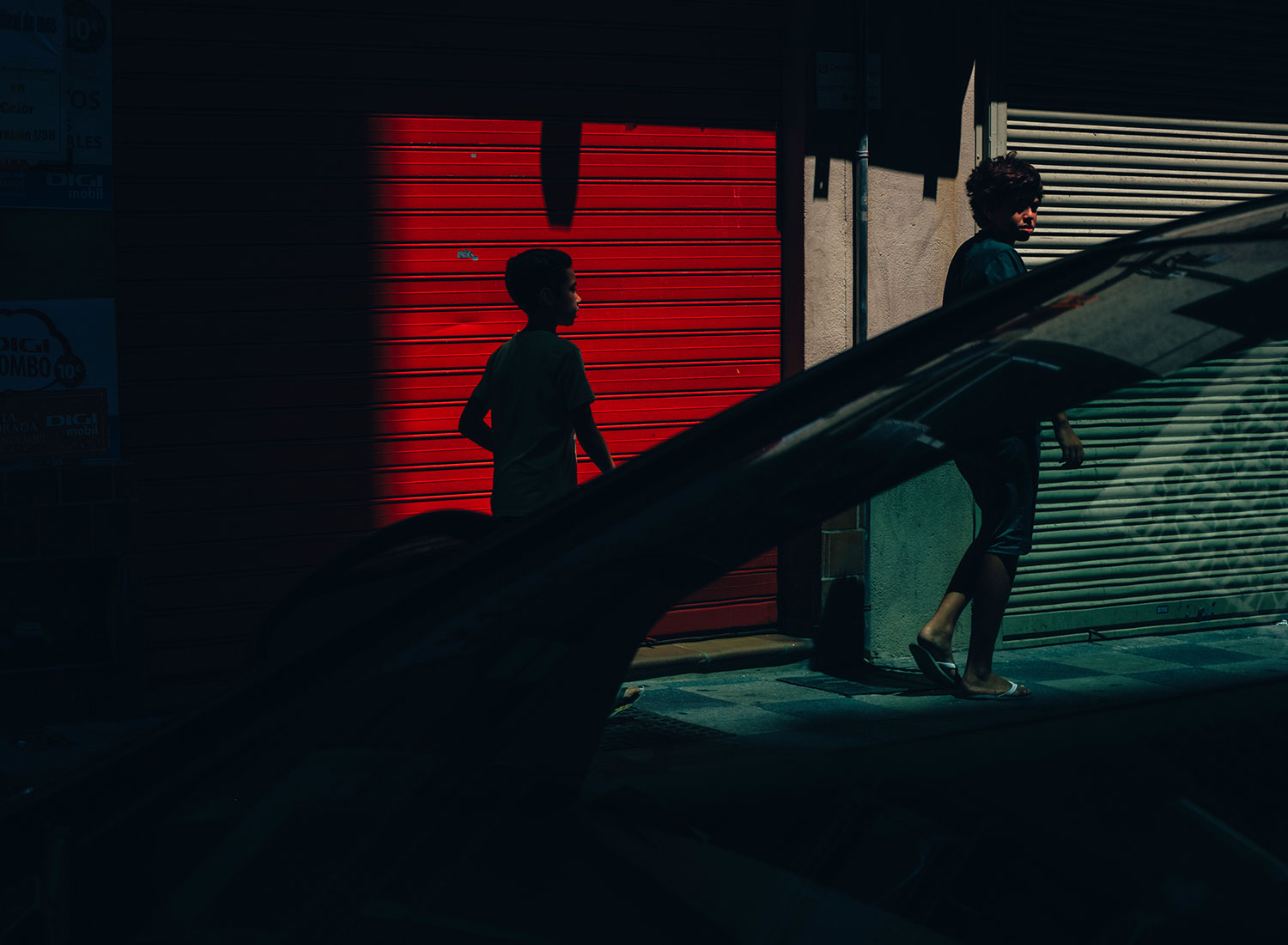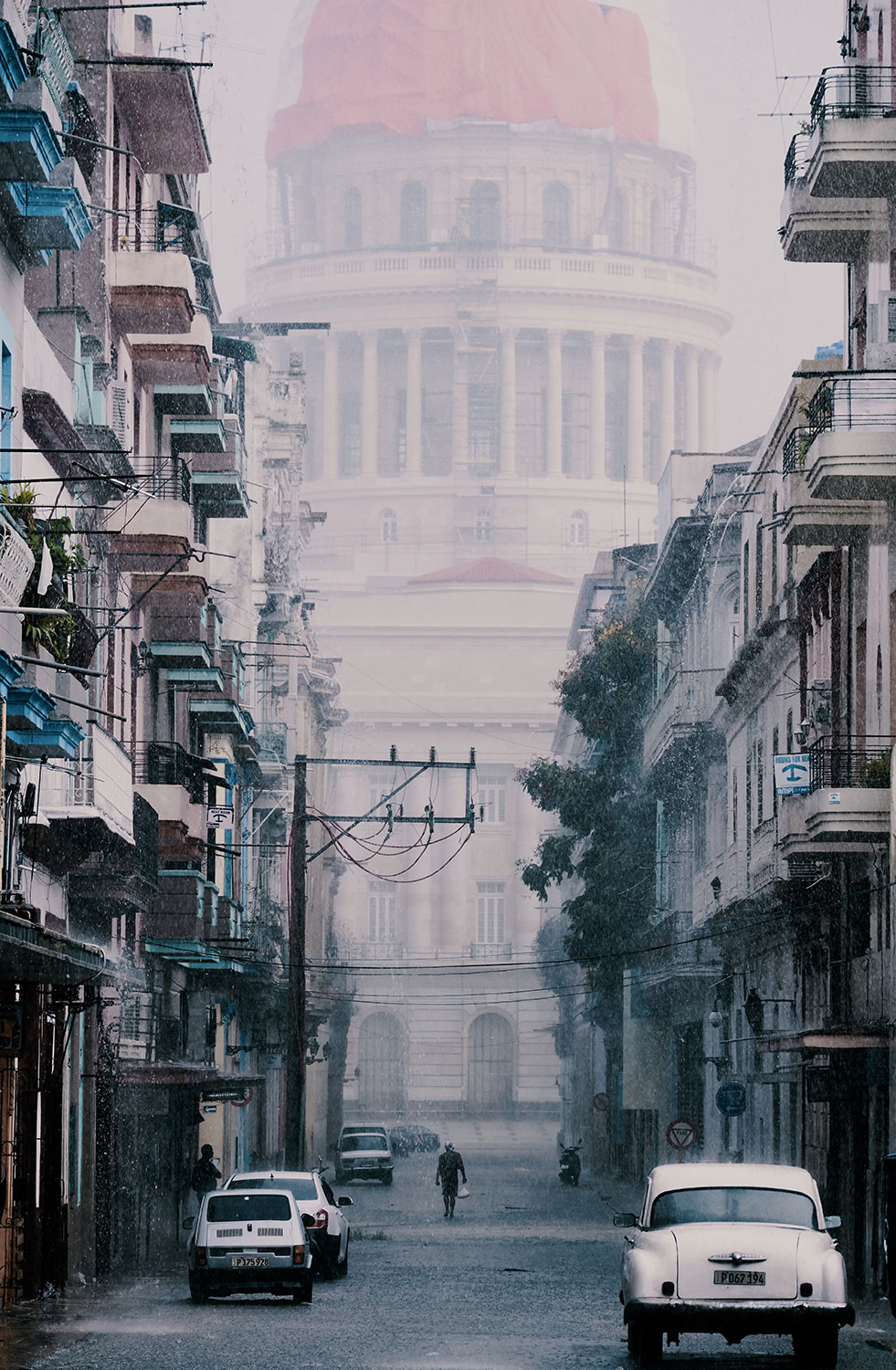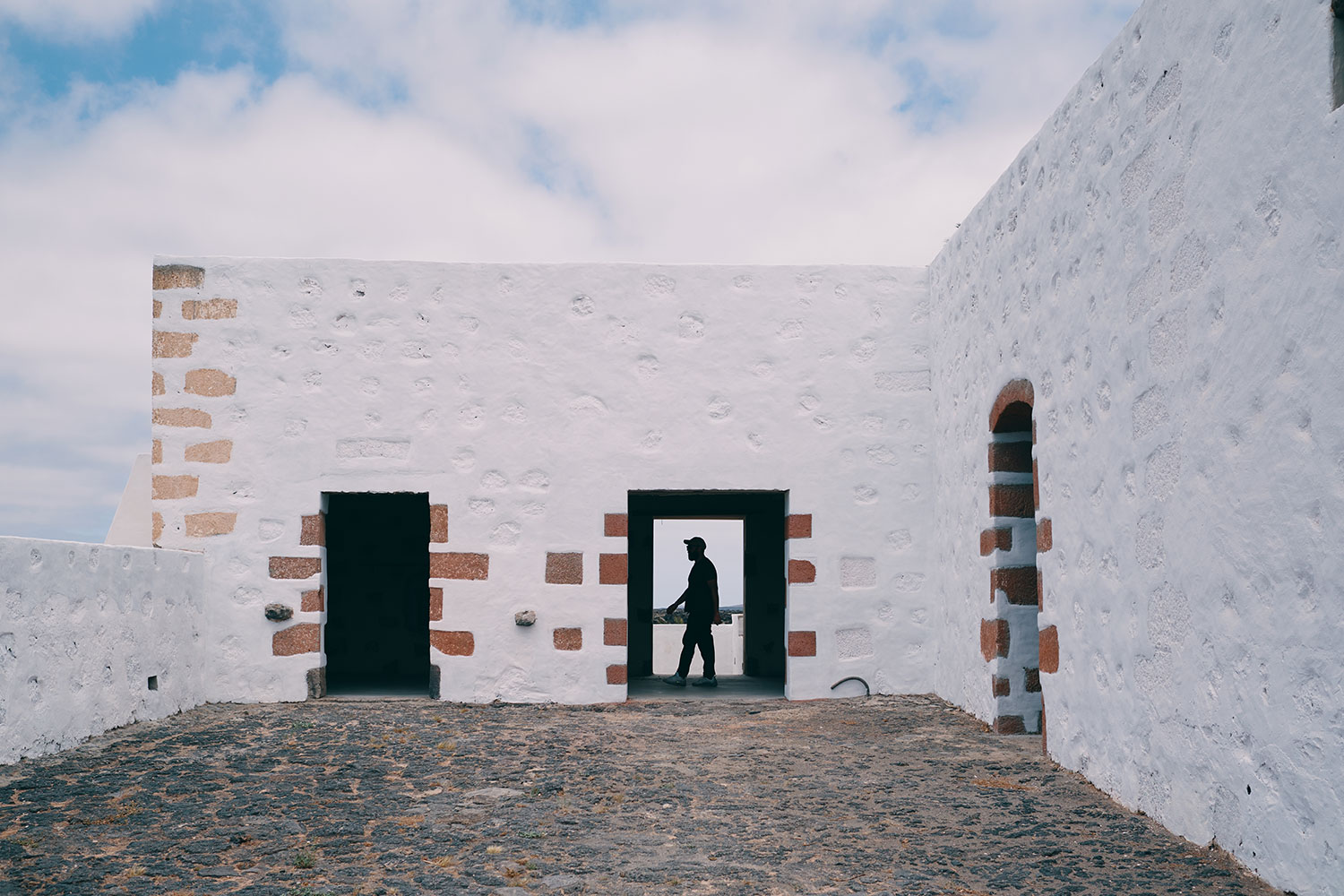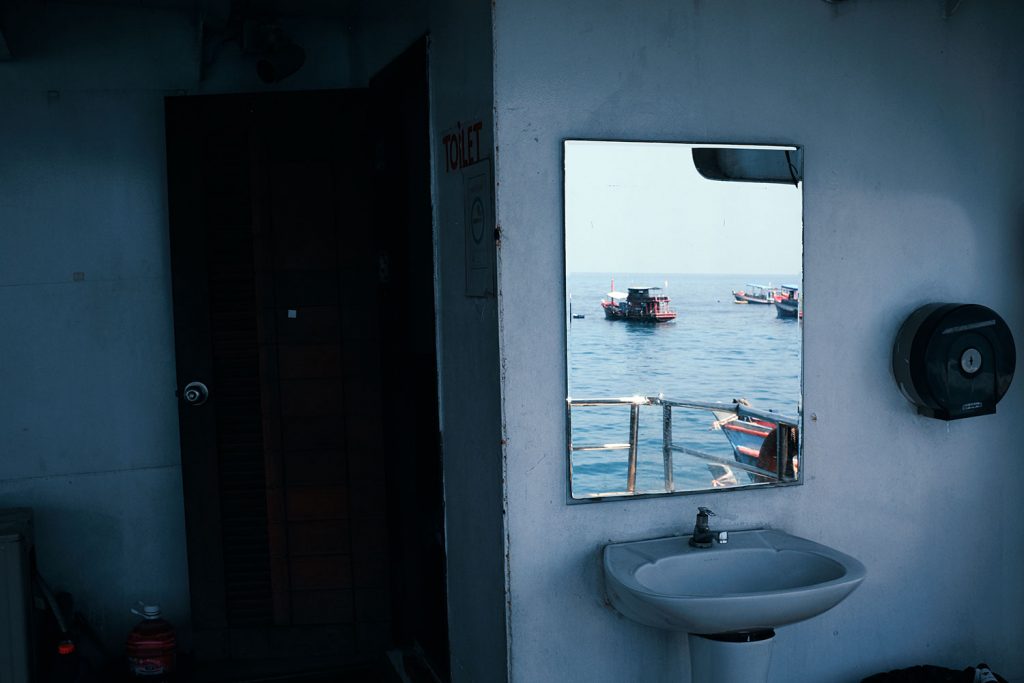An artistic expression
Thank you Beñat, for your time. Could you please start by introducing yourself to our readers?
It’s a pleasure to share these lines with you. I believe that it’s always good to have these spaces for disclosure. I am Beñat Belaza, I am 32 years old, and I live in Madrid, Spain. But I was born in Bilbao, a northern and industrial city. I have been in Madrid for eight years, where I came to study photography, and I stayed. Currently, I work as a cinematographer and photographer in different advertising projects as a freelance.

When you first got interested in Photography and what kind of subjects you used to photograph back then?
Photography was always linked to my studies, let’s say, that it was always there, although it has remained for a long time in “stand by”, without any developments. In 2014 I spent a summer working on the beach, taking photos of the tourists who were spending their vacations, enjoying, you know, lying on the towel sunbathing. It was a hard summer, and I took many photos, many. The purpose of this work was to be able to save some money to buy me a Sony A7S camera (the first version) that was the one advertised at the time. This camera gave me the possibility to start working.
During my day-to-day, I only took pictures, I simply went out with the camera and tried, without a clear direction, I went out and photographed everything that excited me, without major pretensions.

Could you tell us about the reasons that led you to start doing Street Photography?
I remember perfectly that in late 2015, early 2016, I met the work of Jose Luis Barcia (@joseluisbarcia), an excellent photographer who works in both colour and black and white. At that time, I discovered the series “In the shadow” of Barcia, a series of high contrast and subjects isolated by light, minimalist scenes in black and white, basically. Barcia’s work impacted me, for its beauty, design, minimalism and apparent simplicity. Besides, he shoots with his mobile!
On a personal level, I was in search of an artistic expression of my own and had come to the conclusion that I wanted it to be photography, but a photography genre that depended on me, that I didn’t have to ask anyone, just me and the camera. To achieve this, I got a small device (Sony RX100IV) that I always carried in my pocket and that made me feel that I was always ready to shoot.
Madrid is a very cold city in winter but in which it barely rains and, typically, the days are clear at that time of year. I was shooting for about four months, in black and white, day after day to understand how contrast relationships work on sunny days.
I respect and love black and white photography, but I felt it was part of a process and decided to make the leap to colour. High contrast, minimalism, design and colour. Everything was complicated exponentially. It seemed so complicated that many times I lost the desire to shoot out of frustration. It is a difficult process, to go out and return home without any decent photo, especially after a few days. Let’s say I had a time odyssey in which I didn’t finish finding the medium in which I found myself comfortable.

Everything changed in 2017. In April I suffered a foot injury and, like in the movies (Rear Window), I spent 15 days without being able to leave the house and I began to collect the best photos I had taken during the last year. I classified them, analyzed them and started studying the great photographers I admired.
I spent 15 days fantasizing about being on the streets, thinking about the photos I wanted to take and how I was going to make them. I understood that studying was a very important part of the process, that it was not enough to go outside and shoot. After those 15 days, I got a Fuji X100T and was preparing for my first trip to Cuba. That’s how it all started.

Are there any photographers whose work you follow? Could you name a few?
Of course, I also feed on references. In addition, for a year or so I have been to museums at least once a month as an inspiration and Madrid is one of the best cities for that. On a photographic level, having a contrasting opinion with other colleagues, my favourites are not classics like Cartier Bresson, Alex Webb or Robert Frank. My references are on Instagram and I understand that they have an influence as those mentioned above.
My favourites are Jake Michaels, Alfredo Oliva and, the previously mentioned, Barcia.
From Michaels I would highlight everything, moreover, I would agree to sign each and every one of his photos that I have seen. He combines sublime colours and contrasts, and it is the most cinematic of the three.
From Alfredo Oliva, his delicacy and passion. Always shoots in spectacular moments of light because he is always ready. I love his composition and technique. I have a very good anecdote regarding Alfredo. I went to spend a few days in Cádiz, southern Spain, and I wanted to visit Conil, a beach that I knew through the photos of Oliva. In addition, I was accompanied by my partner who also knows his work. When sunset came, we went to the beach to take a picture and, suddenly, I saw a man with a camera that looked like him (Alfredo). I recognized him and approached to greet him and tell him what I admired in his work. Also, I could take a picture, it was a great story.
From Barcia I can add little more than the above mentioned, it is inspiring, both in colour and in black and white, a genius.

Usually, do you photograph when going to or from somewhere, or do you go out with the sole intention to shoot?
I went through both processes. In the beginning, I only went out with the intention of shooting, and I was a little obsessed with understanding the different contexts, situations of light, reflections and colours, studying the street environmentally… Over time, and thanks to beginning to understand and control the differences of light, I started mixing both situations. The key is always to carry the camera on top, I incorporated it into my lifestyle, and now, I usually take pictures on my way to the sites. If I go alone, I take my time, and if I am accompanied I try to make it dynamic, especially for my companion.
When I travel, usually accompanied, I typically reserve 30 minutes to take my photos, or maybe more time depending on the place, because I understand that it is difficult for me to return, I decide to dedicate some exclusive time to photography.


Could you share some tips for finding the right places to do Street Photography?
I usually shoot scenes, that is, places where the angle I use is open. For me, the right place depends on the light. I usually balance between the sun and the rain (more regularly in the sun), I like both extremes. On the one hand, the sun and contrasts and, on the other, rain and umbrellas. I love large masses of colour and umbrellas are everyday elements that represent them. If I’m going to shoot with the sky, the colours I’m looking for in my scenes are usually complementary to blue/cyan: oranges, reds and yellows. If this is not the case, I look for discordant elements that generate contrast in the general scene.
I enjoy a lot in interior places with large windows or light entrances such as airports or central stations in cities. The polygons of the outskirts are places with special attraction since being very open spaces, they can create wide and clean planes.
What is your our workflow on the streets? For example, if you stay in one place, or if you wander around. How do you photograph strangers?
Although it may sound strange, I follow people who arouse some interest in me, either by how they are dressed or by their attitude. I simply try to find an ideal place for them. Sometimes it is difficult, but I have developed an acting inside the street so that it is not obvious that I am photographing them and, thus, not modifying the scene. I try not to be very invasive, and the key is to do it with respect and, in case someone gets upset, I apologize and try to explain it. On the other hand, when I go to a specific place, I choose the scene and the light and wait until the right person passes. There are times when someone appears soon, other times, I have to wait, and many times the light goes out. Therefore, when all this coincides, the satisfaction is immense.

What is the secret for overcoming the fear of photographing other people in the streets?
I think it depends on what kind of person you are. I once lost a roll because a person got upset when he realised I was photographing him and felt attacked. I tried to explain, it was a complicated situation. I hate confrontation and conflict, however, that event made me ask some questions. I created my personal web page and ordered to design some cards with the idea of having a trustworthy support in case something similar happened to me again. Basically the solution is easy, you can approach and explain to the person you have photographed that you really are an artist and your way of expressing yourself is that. Whenever you do it with respect, there should be no problem. The attitude is crucial, and a smile always helps.

Are there any differences between doing Street Photography in Spain or other countries, like Cuba?
I have travelled to Cuba twice in the last two years. The first was for pleasure, and I got to know their habits, I tried to deepen a little in the life of the Cubans, I wanted to understand what it means to live in Cuba and how they feel it. Cuba is an extraordinary place, an oasis within the capitalist world in which we live. There, things go more slowly and photographing is a simpler task. Imagine going back 30-40 years ago and being able to take pictures, besides Cubans are friendly, they are photo-friendly.
The first time I travelled to Cuba was a very inspiring moment, and I began to connect with my own photos. The places are especially particular compared to Spain, my country. Here, in Spain, you have to work harder to get closer to people, let’s say people are not comfortable with a camera pointing at them. The fact that it is more complicated makes it a challenge every day and, also, for this reason, so satisfying.

Would you like to share some tips on how to see the available light and to take advantage of any existing light source?
Everyone loves sunrises and sunsets since the light is gorgeous, soft, warm and less contrasted. On the other hand, my favourite light is the one we have in Spain at 05:00 PM in winter and at 07:00 PM in summer. It has an angle and an intensity that dances with the sunset but, in turn, manages to leave the darkest shadows and generates negative spaces in the image, which my favourites.

What are your usual camera settings and how do you expose for the highlights? Also, what’s your favourite focal length and why?
I shoot two types of photos: scenes and details.
In the scenes or general plans, the subjects are 10 per cent of the photo. I try to capture the movement, freeze it, the famous decisive moment. For that I use the Fujinon 23mm F1.4 on my X-T3, it’s an incredible lens. In my opinion, the ultimate lens for street use. It’s fast, barely deforms and has a generous angle. In addition, I use it to make portraits since it allows me to get closer to the subject, generating a special closeness. For high contrast scenes, I usually expose for the highlights using an aperture of F5.6 or F8, and in that way, I assure the focus. If I need I raise the ISO, even to 1600, because for me it’s more important to get the focus above the definition. I acquired this lens after having used the X100T for more than a year, which has a 23mm F2 pancake, which I adore.
Lately, I am also shooting with the Fujinon 56mm F1.2, which I use to portray textures and details — through the glass, generating layers and depths. I welcome Saul Leiter (one of the classics), a precursor genius of this style. For this type of photos, the settings change completely: an aperture between F1.4 and F2.8 and I like to get texture and nuances in the shadows.
I have been practising this type of photography for less time, which is why I find it more difficult. Depending on the mood of the day, I go out with the 23mm or the 56mm.

For the kind of work you do, what the advantages and disadvantages of Fuji cameras over your previous Sony setup?
In mid-2017 I got the Fuji X100T. Its small size and the large sensor were the qualities that convinced me. What I did not know was the colour science and capabilities that Fuji has regarding the representation of the colour. There I just fell in love. I don’t like to edit the photos too much, and the jpgs in Classic Chrome seemed like the perfect alternative.
Sony indeed has cameras with larger sensors, Zeiss lenses and faster focusing speed, in addition to many higher technical specifications. However, Fuji offers a better colour science, optics and simplicity. Besides, the experience with Fuji is more agile, and the results are faster.
Apart from getting the X100T, I exchanged my A7II for an X-Pro2, my favourite Fujifilm X Series camera and, at the end of 2018, I got the X-T3.
Proof of my confidence in Fuji’s X system is that I have convinced more than ten friends to buy a camera from the Fuji X family and it’s really because I believe in them.

What software do you use for post-processing?
I have a different process than other photographers. From the moment I shot the photo, I anticipate how it will be edited. It’s very important for me that the transition from the camera to the edition is smooth. I send the photo to my mobile via Wi-Fi to later retouch it in VSCO. I upload photos to my Instagram the same day or even minutes after shooting it, without having to go home.
I use the paid version of VSCO. I like it for its simple and effective interface. I have some film emulsions presets as favourites, particularly the KP3 (Kodak Portra 160VC) and the KE1 (Kodak Ektar 100).
In any case, I try to export the photo from the camera and only later edit the contrast and colour.

After a few days, weeks or sometimes even months, I spend two days editing my latest photos on the computer and use the photos I previously edited in VSCO as a reference. In this parallel process of retouching, I use Capture One. Every 6 months I print my work because I like to finish the process and see it in a physical way.
It has been a pleasure to chat with you in this space. The truth is that I like these divulgation magazines and be able to go beyond the photos and get to know the people behind them. You can also follow me on Instagram @benbelaza, where I usually update it daily, or on my website www.benbelaza.com (I am updating it, it is not available right now) where you can also see part of my work as director of photography.
This interview was originally published on the 45th edition of our monthly magazine, which you can check here: Fuji X Passion #45


“I am Beñat Belaza, I am 32 years old, and I live in Madrid, Spain. But I was born in Bilbao, a northern and industrial city. I have been in Madrid for eight years, where I came to study photography, and I stayed. Currently, I work as a cinematographer and photographer in different advertising projects as a freelance.”














Albert Smith
August 3, 2020 @ 9:34 pm
Quoting from article, “I shoot two types of photos: scenes and details.”
This is something that I have arrived at overtime… a general overall scene made with a wider lens, usually a 16mm or 23mm, and I tighter framing made with a 50mm or 60mm macro. I noticed that when I went out with only the longer lens my whole methodology changed and I eliminated much of the clutter to extract the thing that made me stop to shoot in the first place. This works well for me and doesn’t require a bag full of lenses.
I enjoyed looking at your images and reading about your process. Thanks for posting.
Mark Callan
August 5, 2020 @ 3:18 pm
There are some beautiful images here that I find very, very inspiring (and of which I am very, very jealous). Thank you for sharing them and for your thoughts on photography. Very best wishes for your future projects.
José Andrés Ochoa
August 11, 2020 @ 5:44 am
Great interview!
Alex
August 19, 2020 @ 2:52 am
His shots are awesome. Overall I find street photography quite boring as a genre where much of the work I have seen is very flat, but he has a gift for capturing compositions with loads of depth and movement.